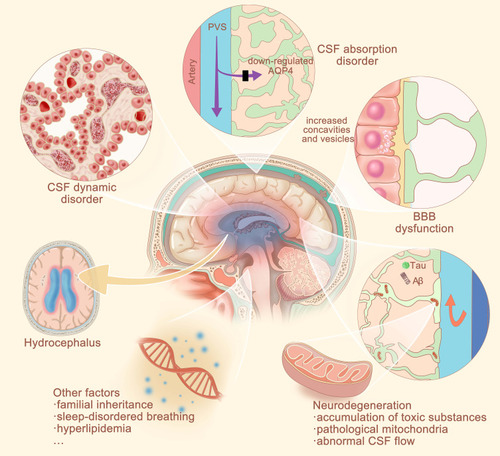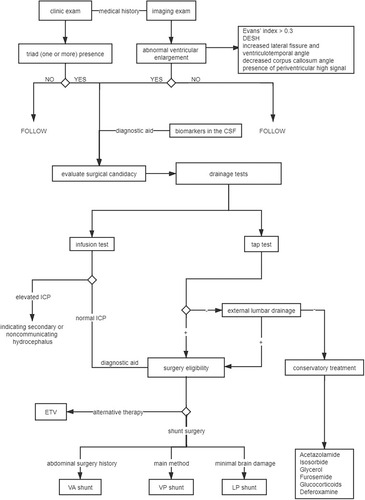Figures & data
Figure 1 Pathogenesis of iNPH. Abnormalities in the choroid plexus pulses affected by heartbeat and respiratory rate, thereby leading to an impairment of CSF dynamics. Down-regulation of astrocyte terminal foot AQP4 protein, thereby leading to impaired CSF absorption. Abnormalities in the protein transport mechanism of blood-brain barrier endothelial cells, thereby leading to abnormal accumulation of proteins in the CSF. Impaired clearance and accumulation of neurotoxic substances, reduced transport efficiency of mitochondrial lesions, and abnormal flow of CSF, all resulting in neurodegenerative lesions. Other genetic, sleep apnea and hyperlipidemia factors may also be associated with the pathogenesis of iNPH.

Figure 2 Flowchart for diagnosis and treatment of iNPH patients. The clinical diagnosis of a patient with at least one of the triad of symptoms, together with the imaging diagnosis of abnormal ventricular enlargement, can raise suspicion of iNPH. Medical history and cerebrospinal fluid biomarkers can also assist in the diagnosis. A positive TT can indicate that the patient is eligible for surgery, while a negative TT indicates that the patient requires further testing through an ELD. On the other hand, a positive ELD also indicates that the patient is eligible for surgery, while a negative ELD indicates that the patient requires conservative treatment. In addition, infusion testing can assist in measuring the intracranial pressure to determine the eligibility for surgery. Surgery is most often performed using shunt surgery, and ETV is an alternative surgical therapy.

